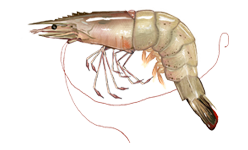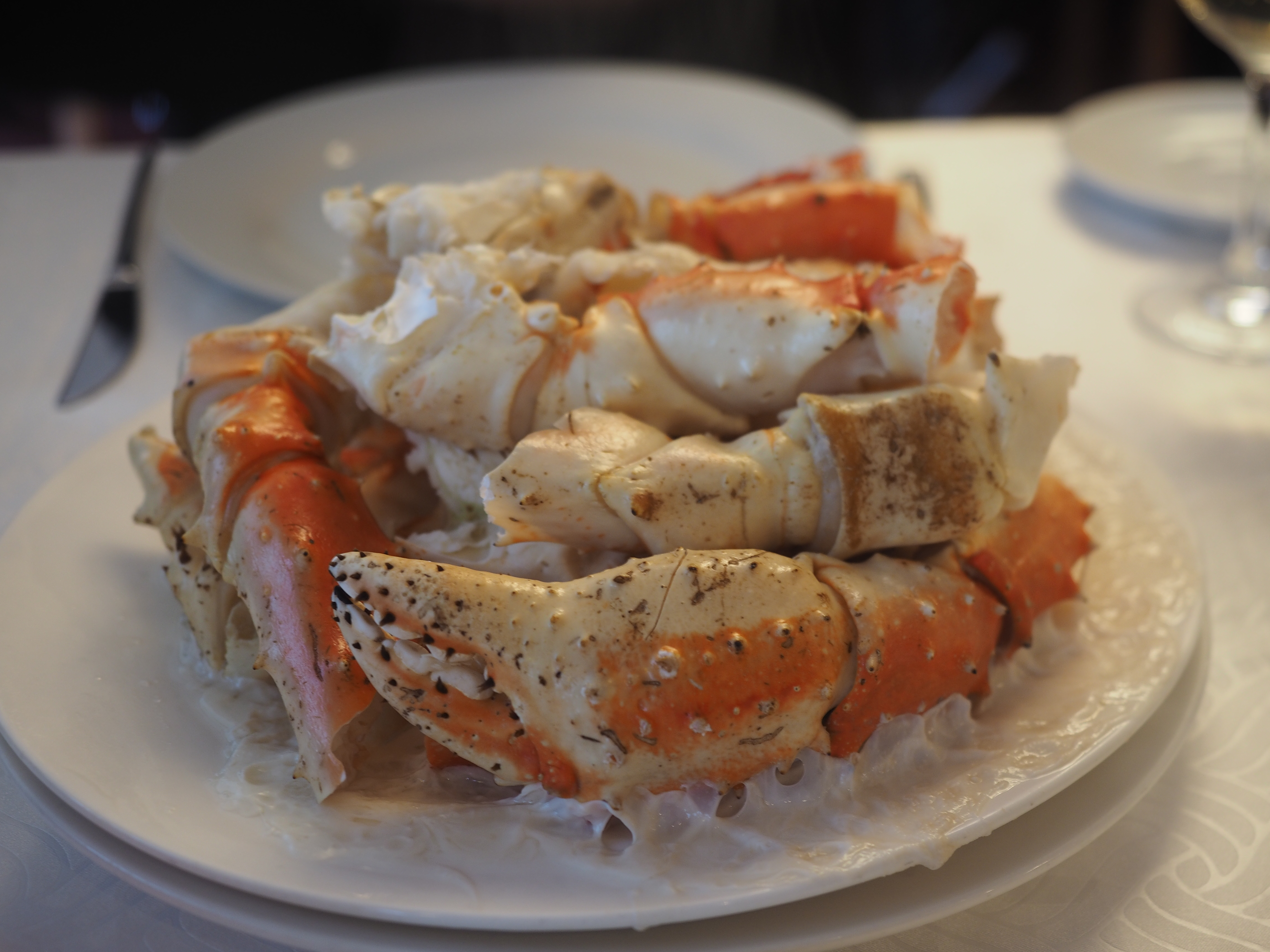|
Lomisoidea
The hairy stone crab (''Lomis hirta'') is a crab-like crustacean that lives in the littoral zone of southern Australia from Bunbury, Western Australia, to the Bass Strait. It is the only species in its family. It is wide, slow-moving, and covered in brown hair which camouflages it against the rocks upon which it lives. Some controversy exists about the relationship between ''L. hirta'' and the other anomuran families. Candidates for its closest relatives have included hermit crabs, specifically king crabs, and ''Aegla''. It is clear, however, that ''Lomis'' represents a separate case of carcinisation Carcinisation (or carcinization) is an example of convergent evolution in which a crustacean evolves into a crab-like form from a non-crab-like form. The term was introduced into evolutionary biology by L. A. Borradaile, who describe .... Notes References {{Taxonbar, from=Q3781116 Anomura Crustaceans of Australia Crustaceans described in 1818 ... [...More Info...] [...Related Items...] OR: [Wikipedia] [Google] [Baidu] |
Anomura
Anomura (sometimes Anomala) is a group of Decapoda, decapod crustaceans, including hermit crabs and others. Although the names of many anomurans include the word ''crab'', all true crabs are in the sister group to the Anomura, the Brachyura (the two groups together form the clade Meiura). Description The name Anomura derives from an old classification in which Reptantia, reptant decapods were divided into Macrura (long-tailed), Brachyura (short-tailed) and Anomura (differently-tailed). The alternative name Anomala reflects the unusual variety of forms in this group; whereas all crabs share some obvious similarities, the various groups of anomurans are quite dissimilar. The group has been moulded by several instances of carcinisation – the development of a crab-like body form. Thus, the king crabs (Lithodidae), porcelain crabs (Porcellanidae) and hairy stone crab (Lomisidae) are all separate instances of carcinisation. As decapods (meaning ''ten-legged''), anomurans have ten pe ... [...More Info...] [...Related Items...] OR: [Wikipedia] [Google] [Baidu] |
Anomura
Anomura (sometimes Anomala) is a group of Decapoda, decapod crustaceans, including hermit crabs and others. Although the names of many anomurans include the word ''crab'', all true crabs are in the sister group to the Anomura, the Brachyura (the two groups together form the clade Meiura). Description The name Anomura derives from an old classification in which Reptantia, reptant decapods were divided into Macrura (long-tailed), Brachyura (short-tailed) and Anomura (differently-tailed). The alternative name Anomala reflects the unusual variety of forms in this group; whereas all crabs share some obvious similarities, the various groups of anomurans are quite dissimilar. The group has been moulded by several instances of carcinisation – the development of a crab-like body form. Thus, the king crabs (Lithodidae), porcelain crabs (Porcellanidae) and hairy stone crab (Lomisidae) are all separate instances of carcinisation. As decapods (meaning ''ten-legged''), anomurans have ten pe ... [...More Info...] [...Related Items...] OR: [Wikipedia] [Google] [Baidu] |
King Crab
King crabs are a taxon of decapod crustaceans chiefly found in cold seas. Because of their large size and the taste of their meat, many species are widely caught and sold as food, the most common being the red king crab (''Paralithodes camtschaticus''). King crabs are generally thought to be derived from hermit crab-like ancestors within the Paguridae, which may explain the asymmetry still found in the adult forms. This ancestry is supported by several anatomical peculiarities which are present only in king crabs and hermit crabs. Although some doubt still exists about this hypothesis, king crabs are the most widely quoted example of carcinisation among the Decapoda. The evidence for this explanation comes from the asymmetry of the king crab's abdomen, which is thought to reflect the asymmetry of hermit crabs, which must fit into a spiral shell. Controversial taxon Although formerly classified among the hermit crabs in the superfamily Paguroidea, king crabs are now placed in a ... [...More Info...] [...Related Items...] OR: [Wikipedia] [Google] [Baidu] |
Hermit Crab
Hermit crabs are anomuran decapod crustaceans of the superfamily Paguroidea that have adapted to occupy empty scavenged mollusc shells to protect their fragile exoskeletons. There are over 800 species of hermit crab, most of which possess an asymmetric abdomen concealed by a snug-fitting shell. Hermit crabs' soft (non-calcified) abdominal exoskeleton means they must occupy shelter produced by other organisms or risk being defenseless. The strong association between hermit crabs and their shelters has significantly influenced their biology. Almost 800 species carry mobile shelters (most often calcified snail shells); this protective mobility contributes to the diversity and multitude of crustaceans found in almost all marine environments. In most species, development involves metamorphosis from symmetric, free-swimming larvae to morphologically asymmetric, benthic-dwelling, shell-seeking crabs. Such physiological and behavioral extremes facilitate a transition to a sheltered ... [...More Info...] [...Related Items...] OR: [Wikipedia] [Google] [Baidu] |
Eugène Louis Bouvier
Eugène Louis Bouvier (9 April 1856, in Saint-Laurent-en-Grandvaux – 14 January 1944, in Paris) was a French entomologist and carcinologist. Bouvier was a professor at the Muséum national d'histoire naturelle. Biography Following graduation at the normal school in Lons-le-Saunier, he taught classes in Ville-sous-la-Ferté, Clairvaux, Versailles (city), Versailles, Saint-Cloud and Villefranche-sur-Saône. From 1882 to 1887, he served as a "boursier" at the Muséum national d'histoire naturelle, where he studied with Alphonse Milne-Edwards (1835–1900) and Edmond Perrier (1844–1921). Together with Milne-Edwards, he worked on some of the crustaceans from the ''Travailleur'' and ''French aviso Talisman, Talisman'' expeditions (1880–1883). In 1887, he earned his doctorate in natural sciences with a dissertation involving Prosobranchia, prosobranch gastropods, ''Système nerveux, morphologie générale et classification des Gastéropodes prosobranches''. In 1889 he became an ass ... [...More Info...] [...Related Items...] OR: [Wikipedia] [Google] [Baidu] |
Contributions To Zoology
''Contributions to Zoology'' (formerly known as ''Bijdragen tot de Dierkunde'') is a scientific journal that started in 1848 as a publication of the Committee in charge of the library of the Dutch Royal Zoological Society "Natura Artis Magistra" and became integrated in the library of the University of Amsterdam in 1939. Since 2019 the journal is published by Brill publishers, Leiden. The journal has been freely available online since 1997. The current editor-in-chief is Ronald Vonk from Naturalis Biodiversity Center, Leiden. Contributions to Zoology solicits high-quality papers in all systematics-related branches of comparative zoology (including paleozoology). Preference is given to manuscripts dealing with conceptual issues and to integrative papers (e.g., ecology and biodiversity, morphology and phylogeny and character state evolution, phylogeny and historical biogeography, systematics and bioinformatics, bioinformatics and biodiversity, habitat disturbance and biogeography, e ... [...More Info...] [...Related Items...] OR: [Wikipedia] [Google] [Baidu] |
Carcinisation
Carcinisation (or carcinization) is an example of convergent evolution in which a crustacean evolves into a crab-like form from a non-crab-like form. The term was introduced into evolutionary biology by L. A. Borradaile, who described it as "one of the many attempts of Nature to evolve a crab". Most carcinised crustaceans belong to the infraorder Anomura. Definition of carcinised morphology It was stated by Lancelot Alexander Borradaile in 1916 that: Keiler et al., 2017 defines a carcinised morphology as follows: * "The carapace is flatter than it is broad and possesses lateral margins" * "The sternites are fused into a wide sternal plastron which possesses a distinct emargination on its posterior margin." * "The pleon is flattened and strongly bent, in dorsal view completely hiding the tergites of the fourth pleonal segment, and partially or completely covers the plastron" Examples Carcinisation is believed to have occurred independently in at least five grou ... [...More Info...] [...Related Items...] OR: [Wikipedia] [Google] [Baidu] |
Molecular Phylogenetics And Evolution
''Molecular Phylogenetics and Evolution'' is a peer-reviewed scientific journal of evolutionary biology and phylogenetics. The journal is edited by E.A. Zimmer. Indexing The journal is indexed in: *EMBiology *Journal Citation Reports *Scopus Scopus is Elsevier's abstract and citation database launched in 2004. Scopus covers nearly 36,377 titles (22,794 active titles and 13,583 inactive titles) from approximately 11,678 publishers, of which 34,346 are peer-reviewed journals in top-l ... * Web of Science External links * Elsevier academic journals Evolutionary biology journals Phylogenetics Molecular biology Publications established in 1992 Monthly journals {{biology-journal-stub ... [...More Info...] [...Related Items...] OR: [Wikipedia] [Google] [Baidu] |
Proceedings Of The Royal Society Of London
''Proceedings of the Royal Society'' is the main research journal of the Royal Society. The journal began in 1831 and was split into two series in 1905: * Series A: for papers in physical sciences and mathematics. * Series B: for papers in life sciences. Many landmark scientific discoveries are published in the Proceedings, making it one of the most historically significant science journals. The journal contains several articles written by the most celebrated names in science, such as Paul Dirac, Werner Heisenberg, Ernest Rutherford, Erwin Schrödinger, William Lawrence Bragg, Lord Kelvin, J.J. Thomson, James Clerk Maxwell, Dorothy Hodgkin and Stephen Hawking. In 2004, the Royal Society began ''The Journal of the Royal Society Interface'' for papers at the interface of physical sciences and life sciences. History The journal began in 1831 as a compilation of abstracts of papers in the ''Philosophical Transactions of the Royal Society'', the older Royal Society publication, ... [...More Info...] [...Related Items...] OR: [Wikipedia] [Google] [Baidu] |
Aegla
The Aeglidae are a family of freshwater crustaceans currently restricted to South America. They are the only anomurans to be found in fresh water except for a single hermit crab species, '' Clibanarius fonticola'', on Espiritu Santo, Vanuatu. They live between 20° S and 50° S, at altitudes between . Description Aeglids resemble squat lobsters in that the abdomen is partly tucked under the thorax. The notable sexual dimorphism in the abdomen is related to the behaviour of carrying fertilised eggs on the pleopods. The carapace length of the largest species may approach , but most are considerably smaller. Aeglids are omnivorous, preferring plant matter, but also eating adult insects, molluscs, fish and fly larvae. The internal anatomy has been described for ''Aegla cholchol'' and generally resembles that of other anomurans, particularly galatheoid squat lobsters. The morphology of the antennal gland bladder differs from that in other anomurans in having a twisted tubular str ... [...More Info...] [...Related Items...] OR: [Wikipedia] [Google] [Baidu] |
Journal Of Crustacean Biology
The ''Journal of Crustacean Biology'' is a quarterly peer-reviewed scientific journal in the field of carcinology (crustacean research). It is published by The Crustacean Society and Oxford University Press (formerly by Brill Publishers and Allen Press), and since 2015 the editor-in-chief has been Peter Castro. According to the ''Journal Citation Reports'', its 2016 impact factor is 1.064. The journal has a mandatory publication fee of US$ 115 per printed page for non-members of the SocietyJournal of Crustacean BiologyInstructions for Authors/ref> and an optional open access Open access (OA) is a set of principles and a range of practices through which research outputs are distributed online, free of access charges or other barriers. With open access strictly defined (according to the 2001 definition), or libre op ... fee of $1830 minimum. References Further reading * * External links {{Wikispecies-inline, ISSN 0278-0372 Carcinology journals Publications establi ... [...More Info...] [...Related Items...] OR: [Wikipedia] [Google] [Baidu] |
Crustaceana
''Crustaceana'' is a peer-reviewed scientific journal specialising in carcinology. It was established in 1960 and is published monthly by Brill Publishers. The journal is abstracted and indexed by BIOSIS Previews, the Science Citation Index, The Zoological Record, and GeoRef. According to the ''Journal Citation Reports'', the journal has a 2011 impact factor of 0.464. The journal is edited by J.C. von Vaupel Klein. It charges an unspecified publication fee from authors of all regular papers, and an optional open access fee of USD 1830.CrustaceanaInstructions for Authors Brill Publishers Brill Academic Publishers (known as E. J. Brill, Koninklijke Brill, Brill ()) is a Dutch international academic publisher founded in 1683 in Leiden, Netherlands. With offices in Leiden, Boston, Paderborn and Singapore, Brill today publishes 27 ... References External links * *{{Official website, http://www.brill.nl/crustaceana Carcinology journals Publications established in 1960 Mo ... [...More Info...] [...Related Items...] OR: [Wikipedia] [Google] [Baidu] |





